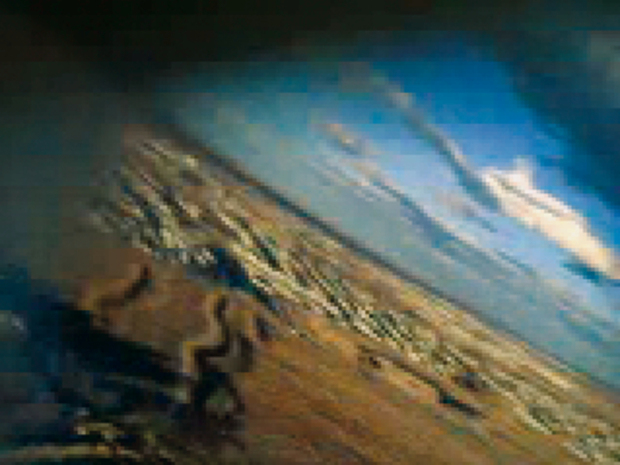The camera connects to a computer using USB protocol, but instead of a standard USB port, it has its own card-edge connector that we’ll need to wire into. We’ll save flying weight by using 2 USB cables, a short one that’s attached to the camera and ends in a lightweight connector, and a longer, second cable that connects the lightweight connector to your computer’s USB port.
Cut and strip a short section of the USB cable. Solder the red, black, green, and white leads to the mainboard’s edge connector, contacts 6-9, respectively. (If the computer indicates a problem later, your cable may not have the standard color-coding, and you should try swapping the green and white wires.)
This cable makes the same connections as the cable for the Dakota Digital camera in MAKE, Volume 03 (“Cheap Shot,” by Charles Hoffmeyer, page 130).
Solder or crimp the 4 leads to one of your power connector pairs, and solder or crimp the other connector to the computer end of the USB cable, preserving the wire ordering.
My connectors weren’t designed to be taken apart that often, but shaving down the locking tabs made them disconnect more easily.
Plug the cable into the computer. Windows XP should identify it as a “Saturn” and prompt you to install drivers. These drivers don’t exist yet, so hit “Cancel.”
If the computer gives an error message and cannot identify the camera as a “Saturn,” swap the green and white USB connections.
Browse to camerahacking.com. Under “CVS One-Time-Use Camcorder,” click “FAQs & Links,” and choose some up-to-date driver software. Carpespasm, BillW, and Corscaria have good wares, among others (and I wrote a Mac downloader that works with the oldest version of the camera, 3.40). Install per instructions.
Record a video and test it. It will be in XVID 1.0 format, 320×240 resolution, 30 frames/sec. After you’re able to download videos from the camera, you may need to install a video codec to play them back; I recommend MPlayer from http://www.mplayerhq.hu.




